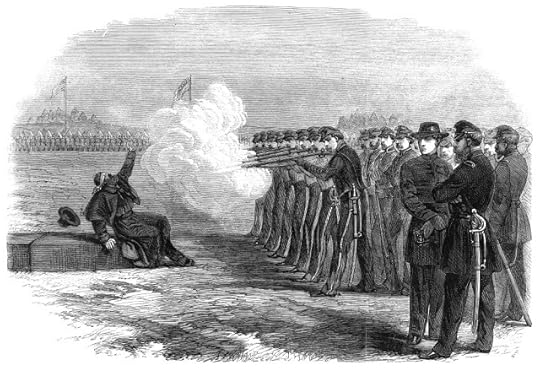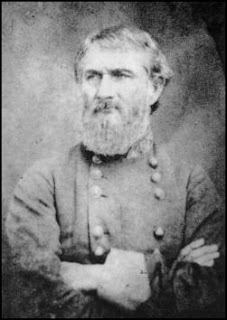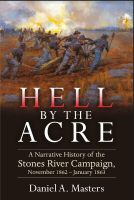Last Minute Reprieve at Murfreesboro
At the endof chapter 3 of Hell by the Acre, I tell the story of the military executionsthat took place at Murfreesboro on December 26, 1862. Three soldiers and onecivilian were slated for execution that day, most famously, that of Private AsaLewis of the 6th Kentucky whose execution became a cause celebrewithin the Orphan Brigade. The story of the second soldier, Edward P. Norman ofthe 28th Alabama, was also described in the book “while the finaldeserter from the 24th Tennessee received a reprieve from Bragg justas he was about to be executed.”
It was not until recently that I learned the story ofhow this Tennessean was saved at the last possible moment by the intrepidefforts of a Confederate enrolling officer.
 A total of three executions took place in Murfreesboro on December 26, 1862. The first was a civilian spy named Gray who was hung near the railroad depot. The military executions took place in an open field south of town where just a few weeks before President Jefferson Davis had reviewed the Army of Tennessee. Asa Lewis of the 6th Kentucky was executed first, then Edward P. Norman of the 28th Alabama. The last soldier, a member of Co. B, 24th Tennessee whose name is lost to history, received a reprieve at the last possible moment.
A total of three executions took place in Murfreesboro on December 26, 1862. The first was a civilian spy named Gray who was hung near the railroad depot. The military executions took place in an open field south of town where just a few weeks before President Jefferson Davis had reviewed the Army of Tennessee. Asa Lewis of the 6th Kentucky was executed first, then Edward P. Norman of the 28th Alabama. The last soldier, a member of Co. B, 24th Tennessee whose name is lost to history, received a reprieve at the last possible moment. Judge Frank H. Smith, writing in the Columbia Herald andMail in 1904, told the story of the Duck River Riflemen which became Co. Bof the 24th Tennessee Infantry. In that article, he writes thefollowing:
“While encamped at Murfreesboro, one of the Duck RiverRiflemen was arraigned on a charge of desertion after the Shiloh battle. Itseems that he had been given a leave of absence for several days and that timehad been extended by Colonel Allison who was then in command of the regiment.Nothing was though or done about this for some months but at Murfreesboro thematter was called up and a court martial ordered to try his case,” Smithstates.
“On this hasty military trial the proof could not be producedof the extension of his leave of absence and Colonel Allison was in a differentcommand then. Greatly to the surprise of all, he was found guilty and underBragg’s idea of strict discipline, he was sentenced to be shot the second dayafterwards. As is customary in military executions, the firing detail is madefrom the company and regiment of the condemned man and W.M. Shires, ChrisShires, George Rummage, and Sam Daimwood of the Duck River Riflemen were ofthis detail to shoot their companion,” the judge continued.
 Lt. Gen. Leonidas Polk
Lt. Gen. Leonidas Polk“The execution was to take place at 4 o’clock in theafternoon; the grave had been dug, the troops of the brigade and division wereall in position on the conventional three sides of a hollow square. The wagonhad been driven up with the man seated on his coffin; the firing squad hadtaken position 10 paces in front of the doomed victim who had been blindfoldedand placed at the grave. Then an officer dashed up, his horse in a foam ofsweat, with a reprieve from General [Leonidas] Polk,” Smith related.
“Mat Reynolds had heard of this strange trial and sentence athis home in Maury County the night before. He had been the enrolling officerwith the regiment in Mississippi at the time the leave of absence had beenextended and knowing this man’s innocence of the charge of desertion, he hadridden all night and well into the day, nearly killing his horse in the effortto reach Murfreesboro. He had barely time to make his statement to General Polkand for the general to send a staff officer with the reprieve. The sentence ofthe court martial was reversed and an honorable discharge granted, and today heis living near Kedron in Maury County, a highly respected man in the community.He says he knows exactly how a dead man feels for he considered himself a deadman.”
And other than knowing the name of thesoldier in question, we know the “rest of the story.”

To learn more about the Battle of Stones River, be sure to purchase a copy of my campaign study Hell by the Acre, recently awarded the Richard B. Harwell Award from the Atlanta Civil War Roundtable as best Civil War book of 2024. Available now through Savas Beatie.
Sources:
Masters,Daniel A. Hell by the Acre: A Narrative History of the Stones River Campaign,November 1862-January 1863. El Dorado Hills: Savas Beatie, 2024, pg. 94
“The DuckRiver Riflemen,” Judge Frank H. Smith, Columbia Herald & Mail(Tennessee), April 15, 1904, pg. 1
Daniel A. Masters's Blog
- Daniel A. Masters's profile
- 1 follower



